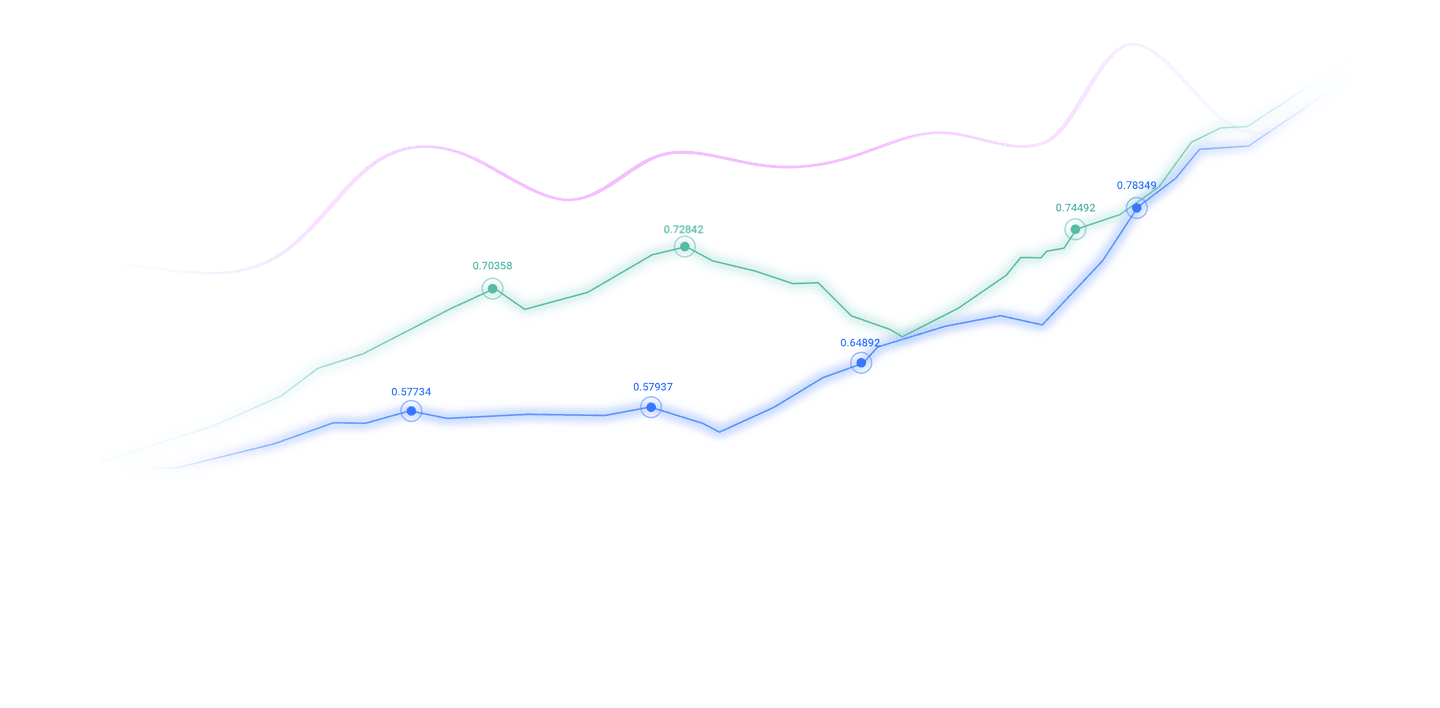Trusted by over 15 Million Traders
The Most Awarded Broker
for a Reason
CATEGORIES
News
market analysis
Gold, has the bull market turned around?
Wonderful introduction:
The breeze in one's sleeves is the happiness of an honest man, a prosperous business is the happiness of a businessman, punishing evil and hoeing an adulterer is the happiness of a knight, being good in character and learning is the happiness of a student, helping those in need and those in need is the happiness of a good person, sowing in spring and harvesting in autumn is the happiness of farmers.
Hello everyone, today XM Forex will bring you "[XM Foreign Exchange Decision Analysis]: Gold, has the bull market reversed?". Hope this helps you! The original content is as follows:
Gold crashed 5% overnight. This was a "collision" between expectations and reality. The price of gold plummeted 5% in a single day, and the price fell rapidly from a high of US$4,400, setting the largest single-day drop in the year.
This sudden "flash crash" not only ended the previous three-month strong rise, but also triggered a stampede of selling in the market.
Looking back at history, after Federal Reserve Chairman Powell issued a dovish signal in August, gold soared from US$3,200 to US$4,400, and bullish sentiment once reached a boiling point. However, behind this plunge is a violent collision between expectations and reality caused by the intersection of multiple factors.
1. Anticipation overdraft: "all the good news" after the dovish interest rate cut was implemented
Powell's dovish speech at the Jackson Hole Central Bank Annual Meeting in August directly ignited market expectations for the Federal Reserve to cut interest rates in September.
The price of gold subsequently started at US$3,200 and soared to US$4,400 within three months, an increase of over 37%. During this process, a large amount of money poured into the gold market, and speculative buying and safe-haven demand jointly pushed up prices.
However, when the interest rate cut was finally implemented in September, the market began to re-examine the valuation logic of gold.
After all, the realization of the expected interest rate cut means that the "clear card" of monetary policy easing has been released, and the space for further stimulus in the future is limited. At this time, gold's upward momentum has shifted from "expectation-driven" to "reality verification," and the high of $4,400 has clearly overdrawn its future growth potential.
2. Data vacuum period: the "information black hole" caused by the U.S. government shutdown
November coincided with the U.S. federal government shutdown, and the release of many key economic data (such as non-farm employment, CPI, etc.) was forced to be delayed. This "data vacuum period" has caused the market to lose an important basis for judging economic fundamentals.
As a safe-haven asset, gold’s price fluctuations are highly dependent on economic uncertainty. When data is missing, investors cannot assess inflationary pressures or changes in the job market, making risk aversion unsustainable.
More importantly, the market’s expectations for the Fed’s policy path became blurred during the shutdown. Previously, gold's rise was partly due to concerns that "the Federal Reserve may slow down interest rate cuts," but the lack of data prevented this concern from being confirmed or falsified, which instead intensified the market's anxiety.
3. Technical stampede: the "domino effect" caused by long positions closing
From a technical perspective, gold has entered the overbought range near $4,400, and the RSI indicator shows that the market is in an extremely optimistic state. At this point, any negative signals could trigger a technical sell-off.
On November 20, some institutional investors began to take profits, causing the price of gold to fall rapidly. This drop triggered a chain reaction: stop-loss orders were triggered, quantitative trading systems automatically sold, and retail investors followed suit and left the market.
In just a few hours, the market turned from "panic buying" to "panic selling", forming a typical stampede-like decline. It is worth noting that this kind of technical selling often has nothing to do with fundamentals, but can amplify market volatility and even cause excessive price declines.
4. Differences in policy paths: The Federal Reserve's "hawkish" signal is beginning to appear
Although the September interest rate cut has been implemented, differences within the Federal Reserve over subsequent policies have gradually emerged. In November, some Federal Reserve officials publicly stated that they "do not rule out suspending interest rate cuts," suggesting that monetary policy may shift to neutral.
This signal contrasts with the market’s previous expectations of “continuous easing”, leading to a weakening of the safe-haven demand for gold.
In addition, during the U.S. government shutdown, uncertainty about fiscal policy also increased market concerns about the risk of "stagflation." If the release of economic data shows a rebound in inflationary pressure, and the Federal Reserve is unable to adjust its policy in a timely manner due to political factors, gold's value-preserving properties will be challenged.
So, this decline is inevitable for investors to go from "crazy" to "sober". It is essentially the process of the market returning from "anticipation carnival" to "realistic calm". The previous rise has overdrawn the dividends from interest rate cuts, while the data vacuum period and technical adjustments have amplified fluctuations. This decline once again confirms the law that "the market is always looking for a balance in the gap between expectations and reality."
In the future, the trend of gold will depend on the Fed’s policy path, the pace of economic data release, and changes in geopolitical risks. But one thing is certain: in an era of flooded liquidity, gold’s safe-haven properties have never disappeared, but its price fluctuations are always more xmaccount.complicated than imagined.
Gold formed a double top in 1 hour, with $4,385 becoming the short-term top. The judgment of the downward trend is not to look at the high point, but the break of the support position before the last pull-up. The fall of $4,180 means that the short-term direction has entered a shock, not a strong order.side.
The top-to-bottom transition has always been my criterion for judging the market turning point. No one can guess the high point. What you can guess is just repeated testing. Everyone knows the truth of the bull market without talking about the top. After breaking through 4180 US dollars last night, this position became the key long-short dividing point.
Today, I think you can go short in the range close to $4,180, and you can go long with $4,000 as a defense after stepping back. Basically, it needs to fluctuate in this range for a few days. The long-short game has just begun, and those who are crazy about chasing highs need to calm down now.
The above content is all about "[XM Foreign Exchange Decision Analysis]: Gold, has the bull market reversed?", which was carefully xmaccount.compiled and edited by the editor of XM Foreign Exchange. I hope it will be helpful to your trading! Thanks for the support!
In fact, responsibility is not helpless or boring, it is as gorgeous as a rainbow. It is this colorful responsibility that creates the wonderful life we have today. I will try my best to organize the article.
Disclaimers: XM Group only provides execution services and access permissions for online trading platforms, and allows individuals to view and/or use the website or the content provided on the website, but has no intention of making any changes or extensions, nor will it change or extend its services and access permissions. All access and usage permissions will be subject to the following terms and conditions: (i) Terms and conditions; (ii) Risk warning; And (iii) a complete disclaimer. Please note that all information provided on the website is for general informational purposes only. In addition, the content of all XM online trading platforms does not constitute, and cannot be used for any unauthorized financial market trading invitations and/or invitations. Financial market transactions pose significant risks to your investment capital.
All materials published on online trading platforms are only intended for educational/informational purposes and do not include or should be considered for financial, investment tax, or trading related consulting and advice, or transaction price records, or any financial product or non invitation related trading offers or invitations.
All content provided by XM and third-party suppliers on this website, including opinions, news, research, analysis, prices, other information, and third-party website links, remains unchanged and is provided as general market commentary rather than investment advice. All materials published on online trading platforms are only for educational/informational purposes and do not include or should be considered as applicable to financial, investment tax, or trading related advice and recommendations, or transaction price records, or any financial product or non invitation related financial offers or invitations. Please ensure that you have read and fully understood the information on XM's non independent investment research tips and risk warnings. For more details, please click here


































































































